Japan Airlines to resume Dallas service. Can new found profitability be maintained with expansion?
It is with some disappointment Japan Airlines (JAL) - once a global heavyweight and defining symbol of "Japan Inc." - concedes it has been quiet. A return in Nov-2015 on the Tokyo-Dallas route marks only the sixth international service JAL has opened or resumed since 2010.
Rival All Nippon Airways (ANA) has been on a growth streak, opening 14 routes since 2010, including four in 2015 alone. One of those is Houston, cementing Texas' recent Asian air service growth streak. Asia has emerged as the largest growth market for both Dallas/Fort Worth (DFW) International and Houston Intercontinental.
JAL's bankruptcy rehabilitation saved the carrier but came with complex restrictions that curtail growth. Entirely new services are in a grey area with ANA effectively deciding. But resumptions are permissible, hence JAL's Mar-2015 Osaka-Los Angeles re-launch and now Tokyo-DFW.
The restrictions on growth expire in 2017 and so JAL is beginning to consider more ambitious growth. But lost time is not causing the throttles to go full thrust. Bankruptcy restructuring in the US is a club (so popular, some visit twice) but in Japan an embarrassment not forgotten.
JAL is focusing on high-yield, low-volume passengers to ensure strong financial performance. JAL has been somewhat isolated in these years due to favourable taxes and other policies.
Its test is when it goes back into an open market, and JAL worries expansion will compromise its profitability, one of the best in Asia. A high-yield, low-volume focus will limit expansion opportunities, and JAL in the long-term may need to reconsider this.
Japan Airlines to 'resume' Dallas service - but in a very different era
JAL will resume Tokyo Narita-DFW service on 30-Nov-2015 with four weekly 787-8 flights. JAL is considering daily service from spring 2016.
The flight is technically a resumption but is effectively a new market. JAL commenced Dallas service in 1999 and suspended it in Sep-2001. Since then the Japanese economy has significantly changed (and more so in recent years), requiring JAL to look more at inbound demand and transit traffic.
Trans-Pacific competition is heightened with the market seeing an excess of capacity, new competitors and a far larger number of powerful carriers than a decade ago. There is some alleviation with the joint venture with American Airlines that operates with anti-trust immunity. Tokyo-Dallas will be the third overlapping route between AA and JAL along with Tokyo to Chicago and Los Angeles.
JAL and American's trans-Pacific Joint Business Network: Nov-2015
JAL's service will complement American Airlines' existing two daily flights. (There is no indication yet that American will cut back in the Dallas-Tokyo market.)
Dallas-Tokyo is American's only trans-Pacific route which sees double daily service. The route connects American's fortress hub in Dallas with JAL's international hub at Tokyo Narita.
JAL had previously mooted relaunching Dallas service (possibly taking over one of American's frequencies) but, strangely, in recent months said the plan had been dropped entirely. DFW suddenly was put back in the plan with an announcement by JAL on 31-Aug-2015, only three months before the launch date.
New JAL service continues DFW's rapid Asian expansion
The Dallas/Fort Worth economy has been growing rapidly, making it one of the fastest growing regions in the US. There also has been an influx of local and foreign companies doing business in Asia.
DFW Airport has successfully pursued more Asian services in recent years. The upcoming JAL launch will mark the fourth new Asian service 0for DFW in less than 18 months, joining flights launched by American to Beijing (May-2015), Hong Kong (June-2014) and Shanghai (Jun-2014).
American now has over 11,000 weekly one-way seats from DFW to Asia, up from only about 3,500 in early 2013. JAL joins Korean Air and Qantas as the third Asia-Pacific carrier in the DFW market.
Korean has a longstanding daily flight to DFW from Seoul which currently operates five times per week with 777s. Qantas launched Sydney-DFW in 2011 and up-gauged the service to A380 and non-stop in both directions in Oct-2014.
There are currently over 15,000 weekly one-way seats from DFW to Asia-Pacific. After JAL enters the market there will be almost 16,000 weekly one-way seats.
DFW Airport to Asia Pacific total one-way seat capacity: Oct-2011 to Oct-2015
DFW also now has service from all three Gulf carriers. Emriates launched DFW service in early 2012 and was followed by both Etihad and Qatar in 2014. A large portion of the traffic carried by the Gulf carriers is heading to Asia, in particular South Asia.
Dallas provides a vast array of connections to the southern US, where there is Japanese auto manufacturing. The hub benefits of DFW stretch beyond to other parts of the US, even if backtracking is involved, and to Latin America.
DFW Airport is keen to attract traffic heading between Asia and Latin America, a relatively small but fast growing market. DFW believes with the right network and product it can attract Asia-Latin America traffic that is now mainly travelling via Canada to avoid the hassle of transiting in the US. "We are very focused on how we can efficiently transfer the traffic from Asia to South America because we have such great service out of South America," DFW International Airport CEO told CAPA TV on the sidelines of the 3-Aug-2015 CAPA Australia Pacific Aviation Summit in Sydney.
DFW International Airport CEO Sean Donohue discusses the rapid growth in DFW's Asia and Middle East passenger traffic and opportunities to connect Asia with Latin America
DFW has been discussing a potential pilot project that could eliminate the current US visa requirement for passengers making international connections. A solution to expedite or bypass the processing of international transit passengers by US customs and immigration is also possible.
JAL could use DFW connections to serve Latin America
JAL can make use of AA's Latin American network from Dallas. JAL has been considering resuming services to Sao Paulo, which it served via New York prior to its bankruptcy. But it could instead use American's DFW-Sao Paulo service to serve the large Japan-Brazil market.
See related report: Japan Airlines to re-open Osaka-Los Angeles, consider New York-Sao Paulo, cut during restructuring
Japan-Brazil is the largest Asian-Latin American market, although the share of carriers operating between these continents is very fragmented. JAL's statement announcing its return to Dallas noted the Latin American connections available on AA from Dallas.
Beyond Dallas connections on American Airlines for JAL: Nov-2015
JAL will also use Dallas to serve Mexico, which has a large automotive industry with connections to Japan. JAL previously served Mexico City via Vancouver.
In recent years JAL has been seeking partnership solutions to cover network gaps left by its restructuring, believing a return with its own metal is high risk and potentially not worthwhile given limited fleet growth.
For JAL, connections from Dallas will be important, commercially and strategically. But at least initially the carrier will focus mostly on Tokyo-Dallas point-to-point traffic, and connections beyond Tokyo to elsewhere in Asia.
JAL and ANA have different strategies with new Dallas and Houston routes
JAL's Dallas resumption contrasts to ANA's Jun-2015 Houston launch. Japan's two long-haul carriers are opening/re-opening service from their Tokyo hub to the southern US hubs of the respective partners, Dallas for American and Houston for ANA. But there are differences.
JAL overall is conservative with growth while ANA is opportunistic. JAL prefers to focus on high-yield, low-volume passengers while ANA targets lower-yield, high-volume passengers in order to enable growth. ANA has overtaken JAL as Japan's largest international carrier, and plans more growth.
ANA's Houston service is daily with 777-300ERs. Even if JAL goes daily to Dallas, ANA will have 1,750 weekly one-way seats to Houston compared to JAL's 1,127 - 36% less. ANA's 787-8 seats eight more than JAL's 787-8, but JAL has a lower share of high-capacity widebodies.
JAL's widebody growth is mostly with smaller 787s and A350-900s. For large capacity widebodies, JAL has 13 A350-1000s on order - effectively one-to-one replacements for its existing 13 777-300ERs. In comparison, ANA still has 777-300ERs on order, has ordered the 777X (larger than JAL's A350-1000) and overall is taking more widebodies than JAL.
ANA benefits from having a bigger Asian network than JAL. Some of this is due to receiving more Tokyo Haneda slots than JAL, but this is not enough to explain ANA's growth.
ANA is fundamentally ambitious while JAL is conservative. So in Texas, JAL can be choosy with limited capacity and an O&D focus while ANA deploys more capacity and accepts lower yields for connections beyond/behind Houston and Tokyo that are necessary to fill aircraft.
Tokyo to NE/SE Asia international capacity for ANA and JAL (seats per week, one way): Sep-2011 to Feb-2016
Air China, EVA and ANA have entered United's Houston hub. Dallas finally receives JAL - but no Cathay or Hainan
JAL becomes Dallas' second Asian carrier after Korean Air. American Airlines is the only other carrier to operate passenger services between Asia and Dallas.
Despite musings from Cathay Pacific and Hainan Airlines, neither has yet entered Dallas. Cathay is a oneworld partner with AA while Hainan has a bilateral relationship with AA.
This contrasts to Houston: as in Dallas, there is now Asian service from the local hub carrier (United) and Korean Air. But Houston has been able to woo four of United's Star Alliance partners, including Singapore Airlines (service via Moscow), Air China, ANA and EVA.
ANA and EVA launched Houston in Jun-2015. Their exact level of cooperation with United varies (ANA has a JV with United whereas SIA is more arm's length), but United's presence is a drawcard. oneworld has fewer Asian members than United's Star.
Dallas/Fort Worth and Houston Intercontinental seat capacity share by international market: Jan-2016
Despite Houston having more carriers, it is Dallas that leads with Asian growth. In Jan-2016, Houston will have 37% more international seats than Dallas but Dallas will have 55% more Northeast Asian seat capacity than Houston.
Dallas also has more seat capacity to the Middle East and Southwest Pacific. This is likely due to American giving interline and codeshare access to Etihad and Qatar, and also having a close relationship (and soon a JV) with Qantas.
Air New Zealand will launch Auckland-Houston services in Dec-2015. Previously Southwest Pacific was the only region Dallas had non-stop access to that Houston did not. Houston still has non-stop service to Eastern Europe and Africa, which Dallas does not. Houston currently has non-stop services to nine European destinations while DFW has just five.
Mr Donohue told CAPA TV that DFW is now working on trying to attract more service to Europe, which is a void in its otherwise well balanced global network. "We think there's quite a bit of upside in terms of more direct services to Europe and that's our priority right now," Mr Donohue said.
For now Northeast Asia is fuelling growth for both of Texas' anchor airports. In Jan-2016, Dallas will have approximately 16,000 more international seats than in Jan-2015 with Northeast Asia account for more than half of these. Northeast Asia will grow by approximately 9,000 seats and be Dallas' largest region in terms of net growth.
Dallas/Fort Worth and Houston Intercontinental seat capacity growth by international market: Jan-2016 v Jan-2015
Northeast Asia will also be the largest growth region for Houston with approximately 13,000 additional seats in Jan-2016 compared to Jan-2015. Central America is just behind Northeast Asia in terms of growth for Houston.
Houston has seen a four-fold increase in capacity to since early 2013. This is even faster growth than at DFW but on a much smaller base.
Houston to Asia Pacific total one-way seat capacity: Oct-2011 to Oct-2015
Asia is a bigger market for DFW but Houston has wider portfolio of carriers
Northeast Asia is larger at Dallas than Houston in terms of net seats and seat shares. Northeast Asia comprises 12% of international seats at Dallas but only 6% at Houston.
Although Houston sees more Asian carriers, United has only one Asian service: a daily flight to Tokyo Narita. In comparison, from Houston American has two daily flights to Tokyo Narita and a daily service to Beijing, Hong kong, Seoul and Shanghai.
United's overall global position could be stronger as it is able to mount a large Asian operation from San Francisco. American and Delta both lack strong west coast hubs. (Delta is now building up Seattle while is American is eyeing more west coast growth). United's Asian hub at San Francisco is a disadvantage for Houston whereas American's lack of a west coast hub is an advantage for Dallas.
See related reports:
- Los Angeles Airport at the heart of a fierce battle between American Airlines and Delta Air Lines
- American Airlines fires a new salvo in the hotly contested US-Asia market with strikes from DFW
Dallas/Fort Worth and Houston Intercontinental seat capacity share by international market: Jan-2016
JAL has launched only six international routes compared to ANA's 14
JAL's bankruptcy re-habilitation came with a number of conditions limiting new investments. JAL's re-habilitation was state-sponsored (although the government made the money back with JAL's 2012 IPO) and the rationale behind the limitations was that JAL was made stronger and enjoyed tax breaks, potentially allowing it to make investments ANA could not afford since ANA was financially prudent and did not need restructuring.
ANA was favoured for domestic and international slots that became available at Tokyo Haneda airport. JAL concedes it gained an advantage and some restrictions are fair. ANA, however, believes it is still disadvantaged. ANA would like the restrictions to continue, but the government appears set to let the restrictions expire in 2017 as planned despite the government being more aligned with ANA than JAL.
The restrictions prevented JAL for considering an investment in Skymark Airlines, which ANA won over Delta's proposal. JAL saw Skymark as a solid investment option but unquestionably an opportunity it could not consider.
Investments in terms of routes is opaque. JAL can re-launch services it used to have, thus Dallas, the Osaka Kansai-Los Angeles and second daily New York JFK services were fine. But entirely new routes are in a grey area; JAL has been able to open Boston, San Diego and Helsinki but other opportunities risk being vetoed by ANA. JAL suspects ANA is opening a Sydney service only because JAL was looking to launch new services to Australia to supplement its existing Tokyo-Sydney service. By launching Sydney, ANA effectively gets veto rights for JAL activity in Australia.
And so since 2010 (JAL's bankruptcy), JAL has opened or resumed service to only six routes. This excludes frequency/capacity growth (New York JFK) or switching services from Tokyo Narita to Tokyo Haneda (as occurred with London Heathrow, for example). This also excludes smaller limited frequency leisure services. In comparison, ANA has opened 14 services, including four in 2015.
ANA will likely open more new routes in 2016 and 2017 to get the last advantage before JAL is able to resume growth. Some ANA destinations - Kuala Lumpur, Sydney - JAL already serves. But overall ANA is now larger than JAL.
International route launches/resumptions from ANA and JAL: 2010-2015
Outlook: how will JAL balance growth with profitability?
In a region - and industry - where operating margins are in the single, often low single digits, it may sound odd to hear that Japan Airlines worries about growth impacting profitability. In the year to 31-Mar-2015, JAL grew its operating profit margin from 12.7% to 13.4%. Surely this is an airline where there is some room to give.
But such is the worry at JAL on maintaining precious profitability after bankruptcy re-habilitation. The world may largely have moved on (or forgotten) about JAL's bankruptcy, but Japan has not. This shapes JAL's outlook, even if it has a larger than normal amount of retail investors, thus easing some pressure compared to institutional shareholders.
JAL operating profit (JPY billions) and margin: year to Mar-2014 and Mar-2015
Although ANA might say JAL has had an easy ride, the growth restrictions mean JAL has been deprived of seeing how its new business structure can perform with growth. JAL has been somewhat isolated due to growth caps and financial advantages that ensure strong fiscal performance.
JAL is not dissimilar from a baby animal whose protective mother is about to set off into the wild. JAL will be able to do as it pleases, but will also have to fend for itself.
JAL may find comfort sticking closer to home and remaining conservative with growth by favouring yield over volume. But as the 2020 Tokyo games approach - JAL and ANA are already advertising - and tourism becomes a larger focus of the Japanese economy, there will surely be government pressure to favour volume instead of yield. JAL can ill afford losing government favour given how supportive Tokyo is to ANA.
See related reports:
- Airlines feel the impact as Chinese tourism preferences shift from Southeast Asia to Northeast Asia
- Japan relaxes Chinese visas to stimulate visitor & airline growth, following Southeast Asia success
JAL may be forced to adapt - and once again assert itself as one of the world's major carriers.
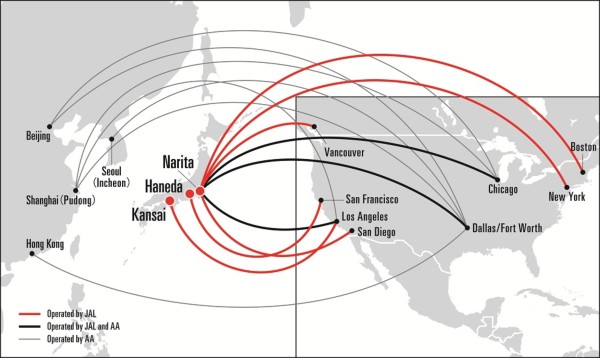
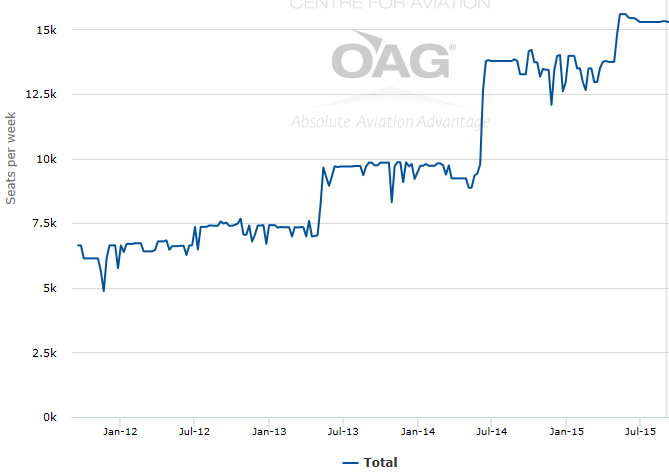
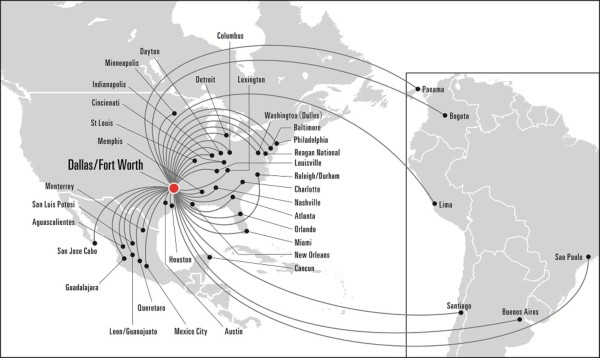
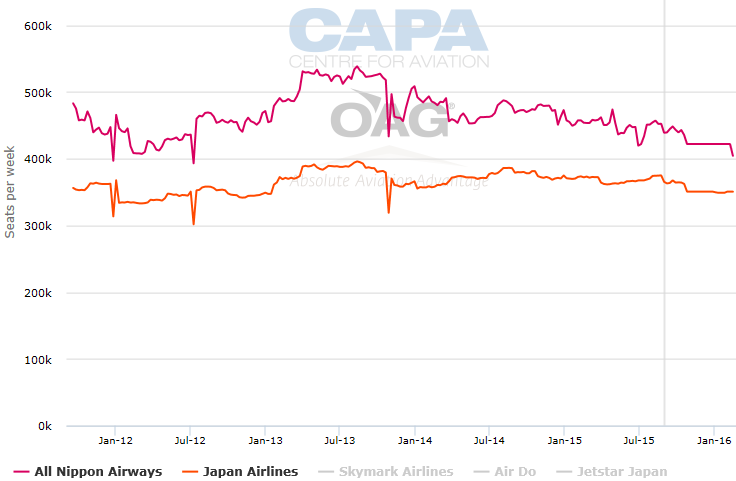
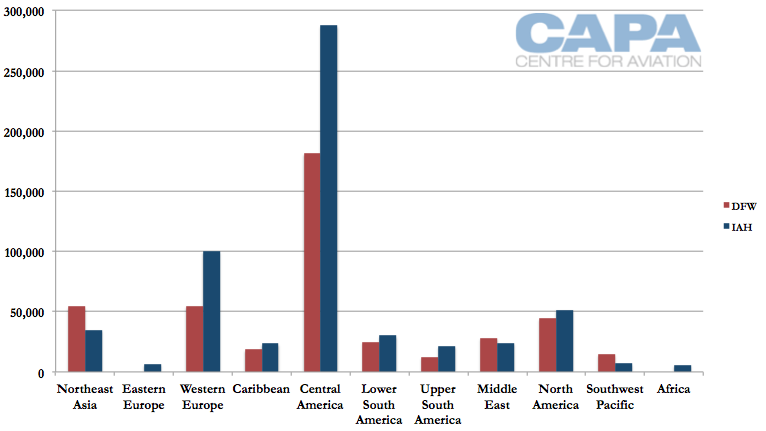

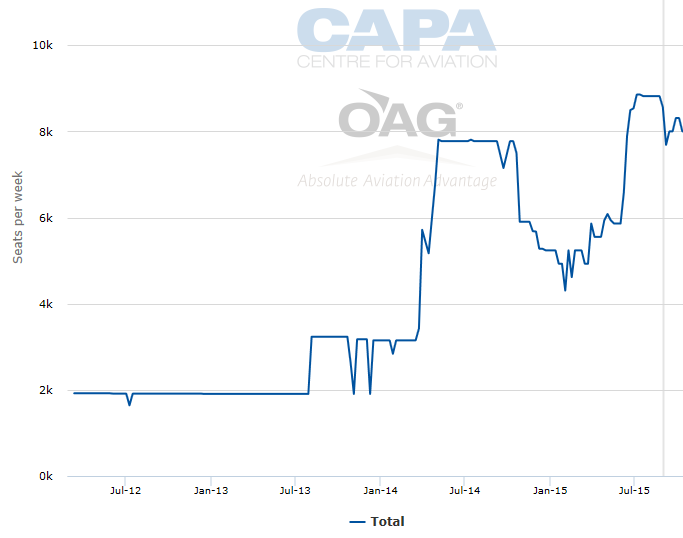
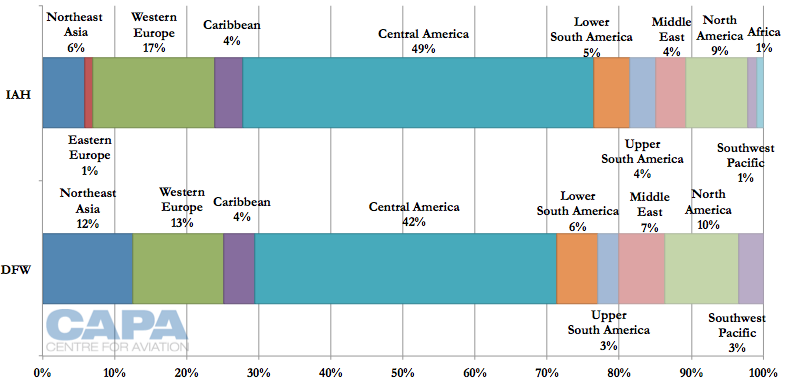 787" height="387" />
787" height="387" />

